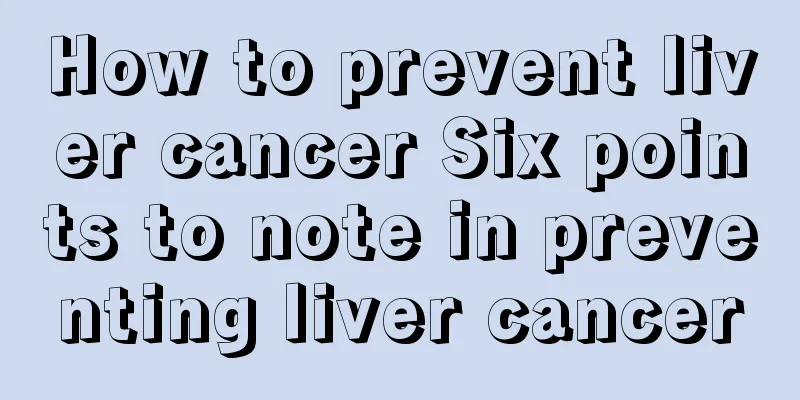Varicose vein angiography of lower extremities

|
Varicose veins of the lower limbs are a very common disease in daily life. It not only has a great impact on the patient's physical health, but also seriously affects their normal life and work. Therefore, it is particularly important to find a scientific and effective treatment method. When people discover symptoms, they need to seek medical treatment promptly and take appropriate treatment to recover health as soon as possible. 1. What are varicose veins and what are the symptoms? Varicose veins refer to the tortuosity and dilation of veins due to factors such as blood stasis and weak venous walls. From the outside, in the early stage, capillaries will dilate under the skin of the limbs. Over time, the subcutaneous blood vessels will dilate and become tortuous, and soreness, swelling and pain will occur after standing for a long time. Varicose veins in the lower limbs often appear as twisted, earthworm-like protrusions of blue veins, and sometimes there may be atrophy, desquamation, and pigmentation of the calf skin. 2. What are the dangers of varicose veins? Many patients with varicose veins believe that varicose veins only affect their appearance and are no big deal as long as they do not hurt or itch. But in fact, if you don't pay attention to early treatment and allow the disease to develop, other secondary diseases may occur, such as skin nutritional disorders, limb swelling, pitting edema, skin itching, dermatitis, pigmentation, foot and boot ulcers, etc., which will not heal for a long time; and venous thrombosis is prone to occur after blood stasis, and the detachment of blood clots can cause pulmonary embolism, which can be fatal in severe cases. 3. Which type of people are prone to varicose veins? The elderly and people who work in jobs that require long periods of standing or sitting are all susceptible to varicose veins. As the elderly age, their blood vessel elasticity decreases and their blood vessel wall tension drops, and their venous valves may become dysfunctional, ranging from mild to severe, leading to varicose veins. For people who stand or sit for long periods of time, such as teachers, drivers, medical staff, company employees, manual laborers, etc., the continuous effect of gravity on blood flow causes reflux, and the refluxed blood puts long-term pressure on the venous valves, gradually causing valve dysfunction and varicose veins. 4. How to treat varicose veins? Varicose veins can be treated with surgery or minimally invasive surgery, with ligation as the main treatment. Varicose veins of the lower limbs can be treated with wearing elastic stockings, injection of sclerosing agents, surgical stripping, etc. Deep venous valve insufficiency can be treated with valve repair surgery and laparoscopic perforator ligation. The basic principle of varicose vein surgery is to remove or close the diseased veins. Because the valves in these veins are damaged, blood flows backwards, which not only fails to return blood normally, but causes the blood that returns through the normal veins to flow back through these diseased veins again, forming a local dead loop. The classic method of surgical treatment is high ligation of the great saphenous vein (which is the main reflux point), trunk stripping and varicose vein stripping. In recent years, many new methods have emerged, including laser, radio frequency, microwave and sclerotherapy. The basic principle is to close the veins that originally required surgical removal through physical heat (laser, radio frequency, microwave) or chemical (sclerotherapy) methods to achieve the purpose of blocking venous reflux and dead circulation. |
<<: Inferior vena varicose vein
>>: Lower limb venous obstruction
Recommend
What are the methods for jejunal nutrition tube implantation
There are many diseases that require patients to ...
Is pulmonary emphysema lung cancer?
Pulmonary tuberculosis is the name of a disease i...
Could pain inside the nose be nasopharyngeal cancer?
Could pain inside the nose be nasopharyngeal canc...
How long does it take to give birth after taking the oxytocin injection
Many women need to be injected with oxytocin if t...
My stomach is always bloated
As we all know, there are many factors that affec...
How to diagnose small cell lung cancer
Small cell lung cancer can be diagnosed through c...
How to relieve pubic pain?
Pubic pain can be relieved through physical means...
What is epilepsy
Many people don’t know what epilepsy is, but in f...
What disease requires blood transfusion
Everyone who has been to college knows that the s...
How to screen for uterine and ovarian cancer in women
Uterine and ovarian cancer is a common disease am...
Can I undergo myopia surgery if I have high intraocular pressure?
Whether surgery is suitable for high intraocular ...
What kind of tea is good for people with gallbladder cancer?
There are no typical symptoms in the early stage ...
Diagnostic criteria for cor pulmonale, these identification bases
The most common diagnostic criterion for cor pulm...
What are the effects of black tea golden flower
The tea ceremony in our country has a long histor...
Healthy dinner abides by the "four no" policy
There seems to be less mention of how to eat more...









